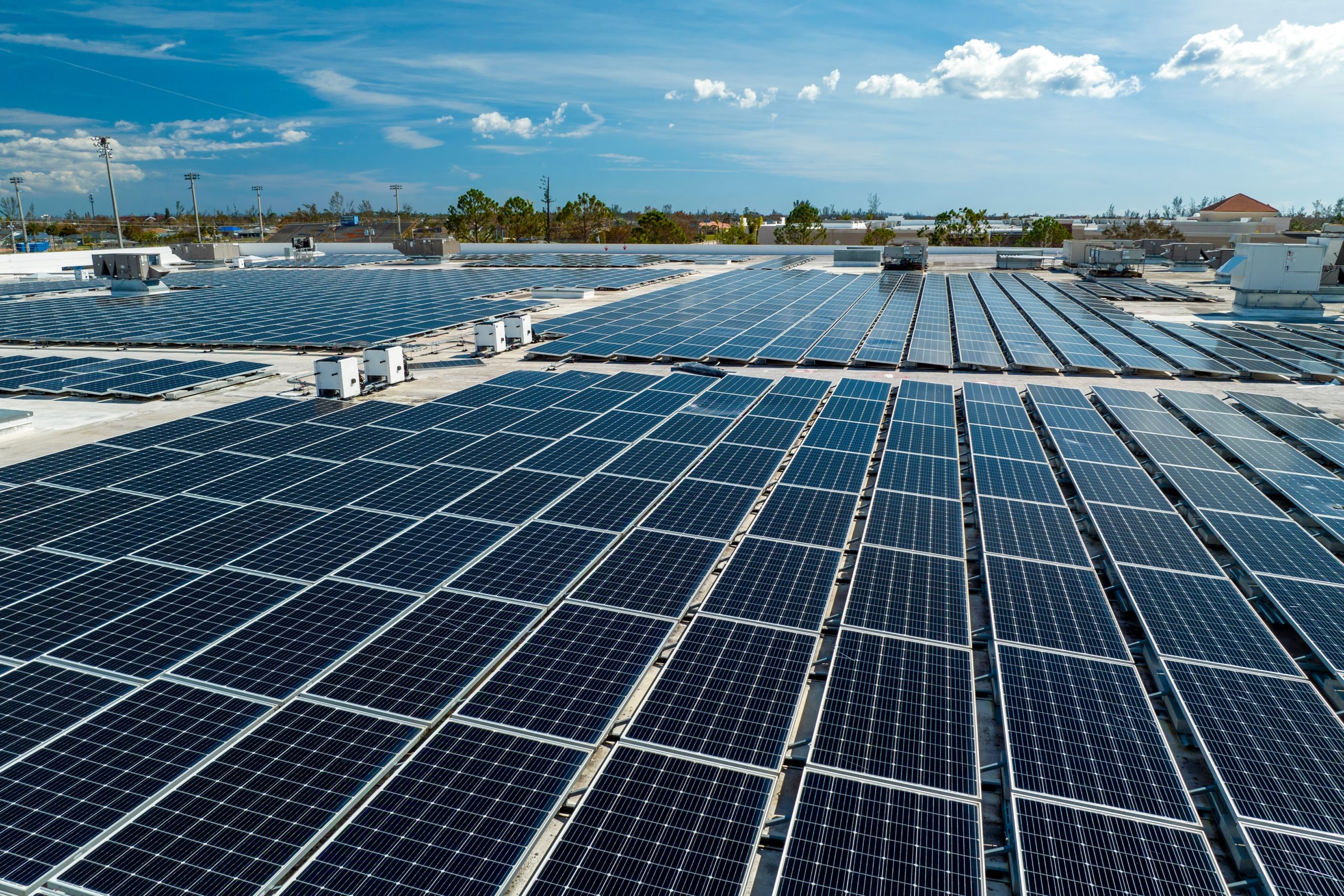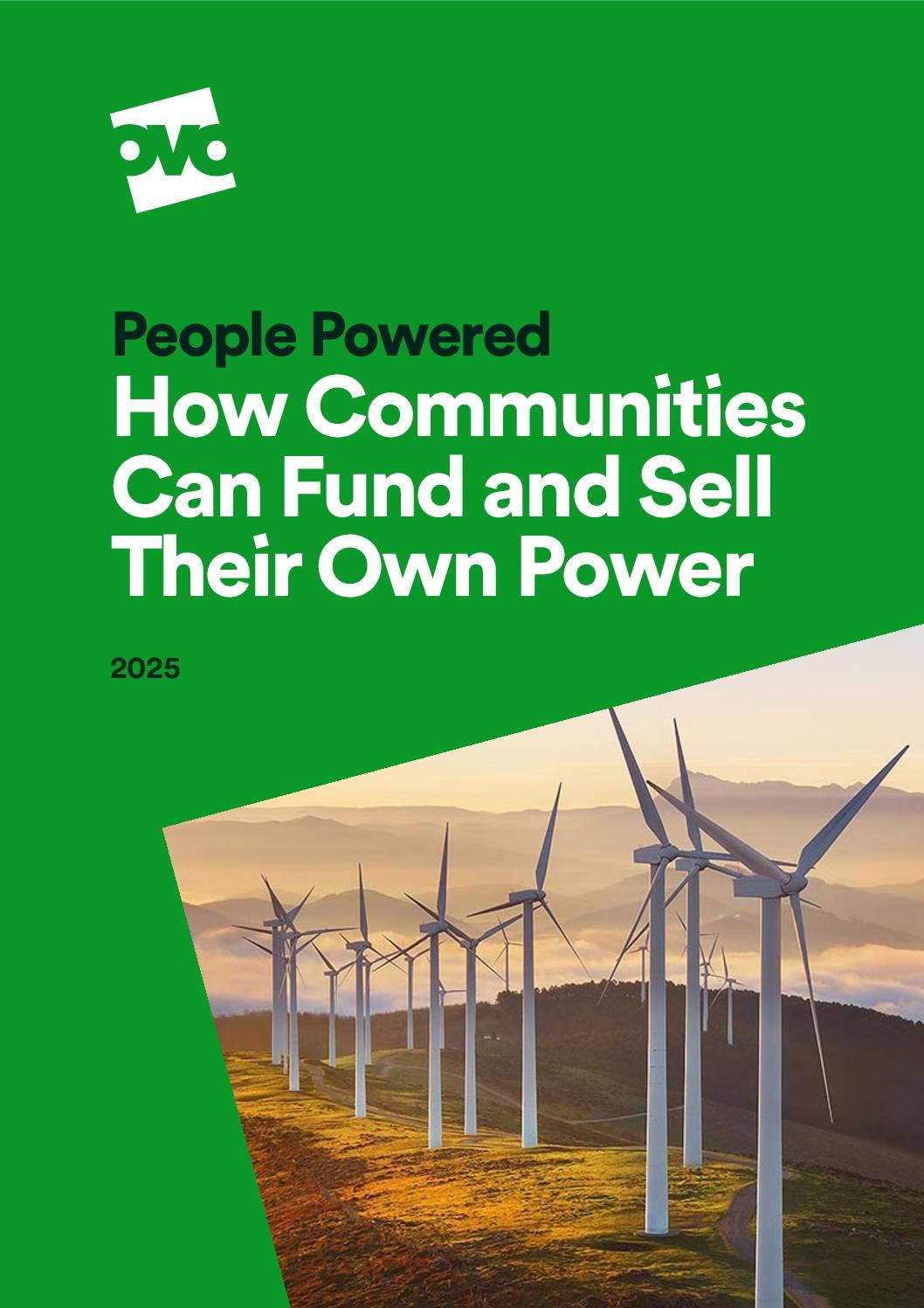
How-to Guide
Electricity generation

Solar PV
As a mature renewable energy technology, well suited to community renewable energy projects, this is one of the most established areas of the community energy sector. Panels capture energy from the sun using photovoltaic cells. These cells do not need direct sunlight to work – they can still generate some electricity on a cloudy day. The cells convert sunlight into electricity, which can then be used directly on site (e.g. within a community building or home) or exported onto the grid. Community solar can be developed in many different ways, from installing small arrays on domestic properties to large arrays on community buildings or ground-mounted in the form of a solar park.
Key tips for getting started
- You do not need to develop your own sites – there are many mature partners who can help you fund and deliver projects.
- Try look for medium to large sites in your community – 50kWp usually needed
- Local authorities can help you develop multi-site projects
- Solar on schools can work – high daytime demand is good – but there can be barriers. See Department for Education guidance and forms especially the school land transactions: guidance and an informal briefing note from the Department for Education
Mature organisations that can help fund and deliver projects
- Solar for Schools – interested in school sites
- Energy4All (Schools Energy Coop)- interested in solar and wind business and school sites
- The Big Solar Co-op – interested in solar projects with active volunteer groups
- Baywind Energy Co-op – interested in solar, wind and hydro projects
Case studies
- Community Solar Accelerator, delivered by Brighton Energy Coop, published a number of solar installation case studies from businesses adding solar installations.
- Bristol Energy Cooperative’s solar farm in Lawrence Weston
- Bristol Energy Cooperative’s solar array at The Bottle Yard 2 Film Studios
- Leeds City Council and Solar for Schools £25 million project
Tools to help you investigate the potential benefits of integrating solar energy into your projects
- Solar Wizard; an innovative tool designed to assess the solar potential of buildings across the country. As a member of the Advisory Group for Solar Wizard, we at CEE are proud to support this Centre for Sustainable Enregy initiative that will empower local authorities and community groups to harness solar energy more effectively.
- Community Energy London (CEL) has developed the Solar Potential Map, a fantastic resource that highlights the solar potential of community buildings and details the retrofit needs to support 1,000 new projects by 2030.

Croydon Community Energy – New Site Guide
Download (PDF, 2.9MB) Croydon Community Energy – New Site Guide

Ovo – People Powered: How Communities Can Fund and Sell Their Own Power
Download (PDF, 2MB) Ovo – People Powered: How Communities Can Fund and Sell Their Own Power

Wind
Turbines (onshore and offshore) harness the power of the wind to use it to generate electricity. The UK has one of the best wind resources in Europe, making it an ideal place to construct a community-owned wind turbine. Wind turbines range in size from small 5-10kW models, up to multi-MW large scale installations.
The de facto ban on new onshore wind projects was lifted as of 8 July 2024. Since then, the first wind project in England to receive planning permission, has been a community led wind turbine.
Tools and support for wind
To support the development of new community wind turbines, we have funded and launched VoteWind, an open- source community wind planning map. Bringing together multiple planning constraints and wind speed data into a single visual map, it is designed to make it easier for our members and the wider public to identify sites in their local areas that are most suitable for a community wind turbine. This can then speed up the early feasibility process and guiding people to the best resources in the sector to take their projects forward. It’s 3D visualizer also gives people an early view of how it would look in their local landscape.
It is designed to work alongside other community engagement tools like Future Energy Landscapes, Community Energy GO, and the GB Energy Community Fund.
For wind project support, we also highly recommend contacting SIFFFT

Energy4All – Thrive Funding Seminar slides
Download (PDF, 4.1MB) Energy4All – Thrive Funding Seminar slides

Hydro-power
Uses running water from a stream or river to generate electricity. Small or micro-hydro systems in the UK range from sub 20kW systems up to large 100-200kW units. Hydro systems by their nature are often more complex and need a wide range of expertise and resources to be successful. At the moment, new costs to licensing make it very difficult to pursue a community hydro project. For all updates on hydro lobbying and policy updates, sign up to our newsletter.
